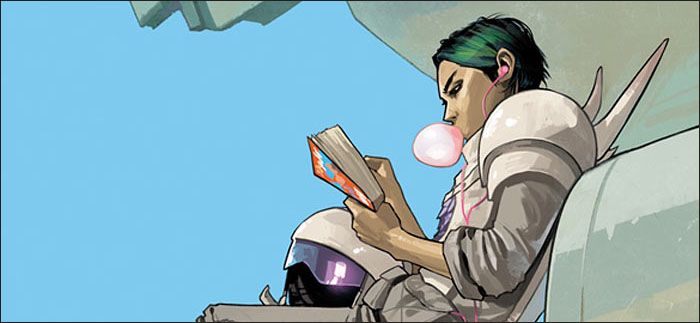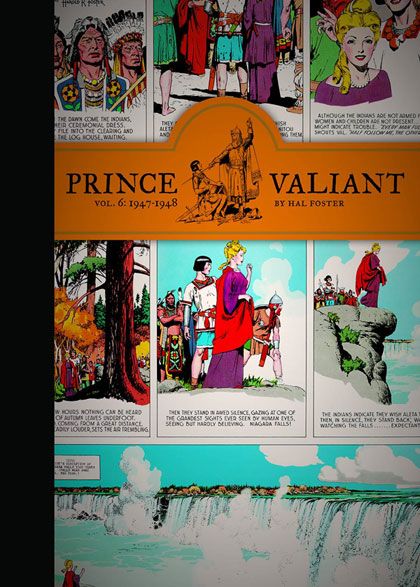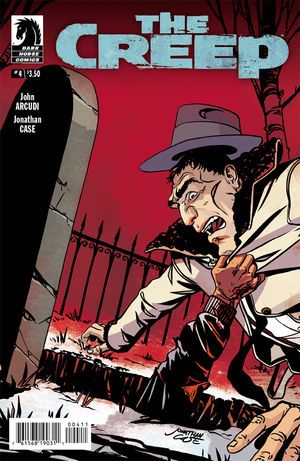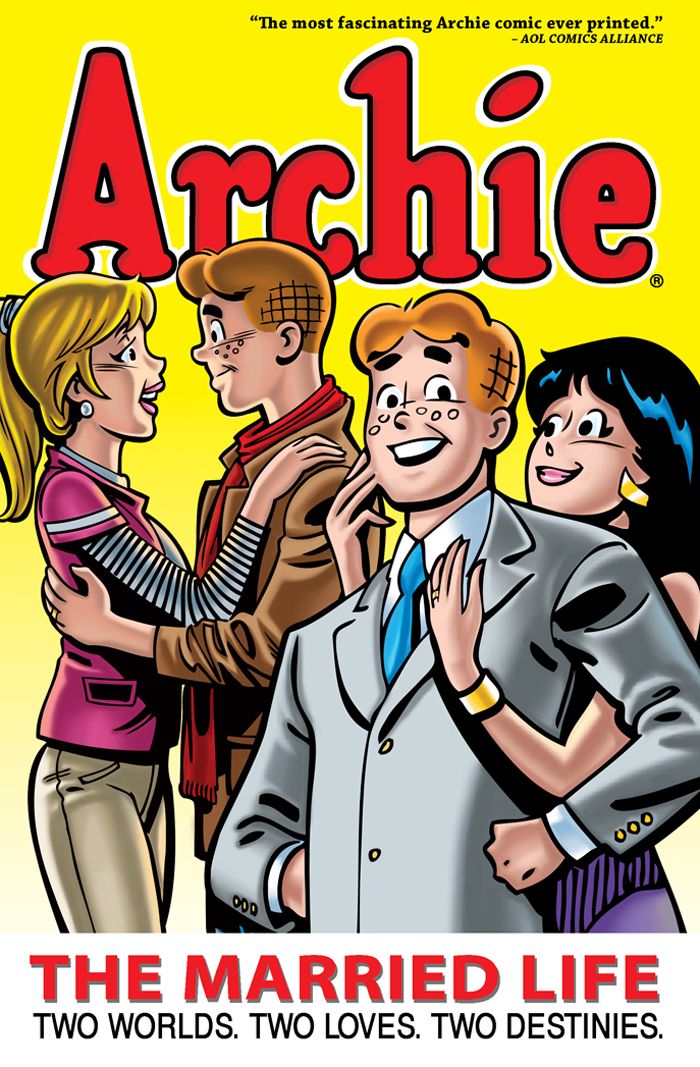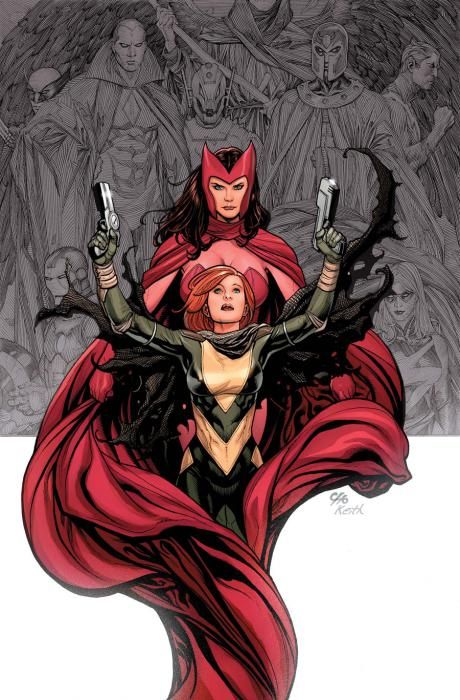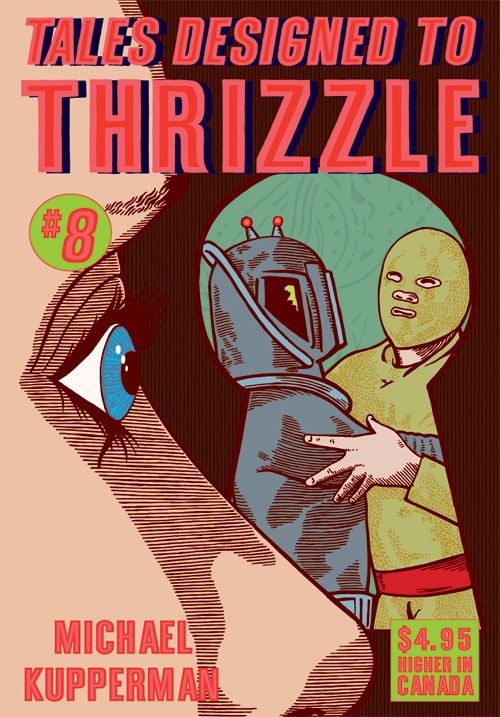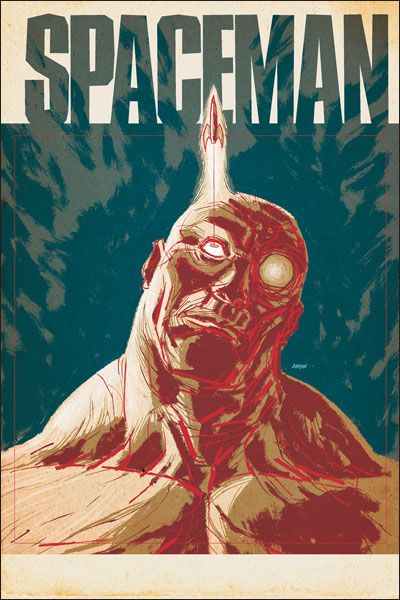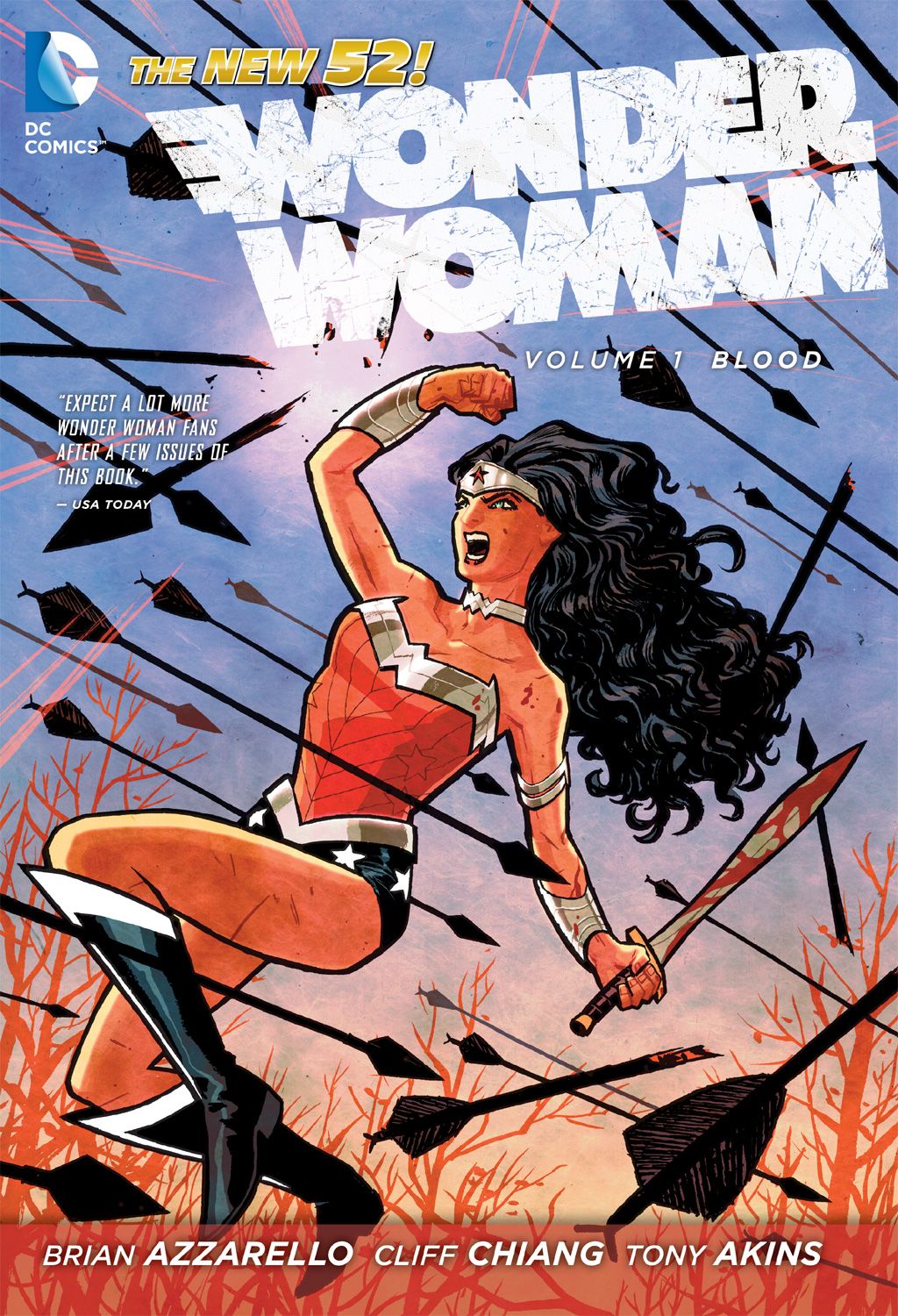Hello and welcome to another edition of What Are You Reading?, where each week we talk about comics and other stuff we've been checking out lately. Today we welcome special guest Joshua Williamson, writer of Masks and Mobsters, Captain Midnight (which has been running in Dark Horse Presents), Uncharted, Voodoo and much more.
To see what Joshua and the Robot 6 crew have been reading, click below ...
*****
Chris Mautner
Prince Valiant Vol. 6: 1947-1948 by Hal Foster -- The bulk of this book involves a lengthy storyline where Valiant's new bride is kidnapped by vikings and Val chases the miscreants all the way to North America, where he eventually makes friends with the natives and his first son is born. As noted in the introduction, Foster shows considerable care in not resorting to the "How, ugh" stereotypes that proliferated during his time but instead takes care to portray them as a unique, complex culture, though there is a bit of "white man's burden" going on where Val's fighting ways and technology are presented as superior to that of the tribe he encounters, while his wife, Aleta, is honored by the Natives as a goddess because of her blond hair. All the same, it's startling to see the care and research Foster put into his strip and I think it's one of the things that make it hold up so well despite the decades.
There's also a great sequence here Val backs an evil viking up against a cliff and then Foster just shows the villain falling from far away, in a large vertical panel, no narration. It's a wonderful moment and alone worth the price of admission.
Captain Easy Vol. 3 by Roy Crane -- I think it's the blend of slapstick and high adventure that makes Crane's work stand out from everyone else's. He's able to shift from straight-faced, harrowing action to some big-nosed goofball doing a pratfall and make it seem perfectly natural. There's a lot more slapstick here than in previous Easy volumes, particularly a storyline where Easy's partner Wash Tubbs, gets a hippo for a pet, which gives you an idea about how seriously Crane took these stories. It's all great comics though, and well worth your time.
Tim O'Shea
The Creep #4: The final installment in this four-part miniseries delivered for me. It’s a tale of pain and loss on many levels and writer John Arcudi does a solid job of filling in the missing pieces of the puzzle in this issue. I do not know if he has another Creep story in him, or this was a one-time miniseries. I am really hoping to see more of The Creep and more from Arcudi and artist Jonathan Case working together.
Bandette #3: Cannot decide which from this issue I enjoyed more—Paul Tobin’s witty script or Colleen Coover’s use of black silhouette in the panels leading up to the introduction of the new character. Bandette exudes fun in every aspect of the story, and is a hell of a bargain at 99 cents.
Ultimate Spider-Man #9: I was giddy when I opened up this issue to find that the second of two “done-in-one-half” stories was written by Karl Kesel and drawn by Ty Templeton. Really? Two of my favorite creators in one story. It was as good as I had hoped and involves a giant monster.
Fantastic Four #2: Writer Matt Fraction really suckered me into this series with the opening Ben Grimm/Yancy Street moment in this issue. That being said, there appears to be a wee bit too much padding for the trade in the writing, but that’s true of about every major Marvel and DC comic these days.
All-New X-Men #1-3: In the wake of my enjoyment of Walt Simonson’s recent Avengers run, I decided to try a few issues of the new time travel tale by Brian Bendis/Stuart Immonen/Wade von Grawbadger. I cannot stand Bendis’ writing, he writes characters in a voice he likes (and that frequently does not come close to sounding the way any other writer has ever approached the character). And that streak of disliking Bendis’ writing continues. That does not matter, as Stuart Immonen’s art on this book is what makes it a must read. Honestly, while appreciating von Grawbadger’s inking for years, I think his ability to adapt with Immonen’s ever-changing art style has not been given the proper attention (and praise) it deserves. Immonen with von Grawbadger puts the art on par with Neal Adams inked by Dick Giordano in their prime.
Corey Blake
Archie: The Married Life Book One by Michael Uslan, Paul Kupperberg and Norm Breyfogle: I can't say I'm an Archie fan, or that I've even read much Archie, but I can't deny their impressive publishing moves over the last number of years. I'd heard that these 'what if' tales continuing the Archie Wedding stories were far better than they ever needed to be so I was interested to find out. The first couple chapters, which each make up the first installment of each of the two scenarios (a world where Archie marries Veronica, and the other where Archie marries Betty), were actually a little painful. Some of the dialogue and the vanilla characterizations just weren't doing anything for me. I almost gave up on it but decided to keep going. And a strange thing happened over the subsequent chapters - I actually got pulled into the lives of these characters. It's an entertaining but safe soap opera that looks at Americana nostalgia vs corporate modernity. At the same time there are glances at and references to the rich Archie history that didn't alienate someone like me who knows only the bare basics. The cartooning is consistently colorful, expressive and effective with that familiar Archie style. However, since the chapters alternate from one world to the other, it's easy to forget what moment happened in which world. In one of the afterwords, writer Paul Kupperberg admits to sometimes getting confused too, and I don't blame him. I think having a different artist would've gone a long way to solve this problem so there would at least be a visual cue that could help distinguish the realities in memory. A different inker is used but I don't think they're applying different enough styles to help differentiate storylines. That aside, it's a fun tale of alternate realities, choices, friends and community.
Walt Disney's Donald Duck: Lost in the Andes by Carl Barks: So fun! These stories clip along packed full of visual gags, smart plotting that pays off, alliterations and other word play, and some of the most solid cartooning ever. Reading comics from the '40s can be challenging, as the writing can feel really dated. Scripting in comics has come a long way. There was often a self-conscious concern that the art wouldn't convey the correct information, so characters would describe what's happening right in front of us as though they're in a radio play. But Carl Barks knew his art was more effective at communicating than any words, so that freed his characters up to respond to what's going on, and add information that can't be seen. The famous square eggs story "Lost in the Andes" is a world traveling epic packed into 32 pages. I'm glad that the cover of the original issue was reproduced at the end of the book, because I got to read the story without seeing the answer to the mystery of how the square eggs are made, as it's a really fun and funny reveal and surprise. Carl Barks' imagination is set to ten, with concepts and twists enough for five stories. "Donald Duck's Worst Nightmare" is masterfully done, building up a series of nightmares and then mirroring them in the final sequence. The story also boasts some of the silliest looking sharks ever. "Pizen Spring Dude Ranch" is hilarious. How many times can that guy come back and sell Donald the same three horses?! Delightfully silly. The antics these characters go to in order to foil each other is ridiculous but somehow always believable. The book also has an introductory by Prof. Donald Ault and supplementary essays about each story from a variety of other Barks specialists. It's a great package and fitting tribute to a magnificent American artist.
Avengers vs. X-Men #0 by Brian Michael Bendis, Jason Aaron and Frank Cho: ComiXology's 12 Days of Gifting promotion is giving away a free comic a day. Free is one of my favorite prices so I couldn't resist downloading as many of these as I could. This was the first one, the introductory issue setting up the final pieces for Marvel's big Avengers vs X-Men event. Frank Cho offers clean and entertaining storytelling to two short stories, one featuring Scarlet Witch from the Avengers (written by Brian Michael Bendis) and the other featuring Hope from the X-Men (written by Jason Aaron). As seems to be the case with zero issues, I can't say these stories felt overly crucial. Beyond the moving of a chess piece (Scarlet Witch's return), there's some conversations that avoid saying anything too specific because those things need to be dolled out over the next 12 chapters of the crossover. Perhaps best of all is a fun opening fight scene with MODAK and AIM. It's just fun superheroics - bright, in the middle of a city street, with explosions and stuff. A crazy dinosaur head missile is flying through the air about to eat someone. I'm not going to argue with that.
Green Lantern #1 by Geoff Johns and Doug Mahnke: This was the first issue of Green Lantern after the big New 52 cosmic reset button was hit over a year ago. To be honest, I was not expecting much, as I found Justice League #1 kind of not very good at all. But this was solid. I like Hal Jordan like this - kind of an insensitive screw-up, self-destructive but somehow likable. Having barely read any recent Green Lantern comics, and understanding that his group of books were kind of ignoring the universe reset, I was expecting to be confused. But this was simple and clear. I understood these characters had lives with events that I have not read but it didn't bog the reading down. While I had some questions, they weren't so distracting I couldn't enter the story's world. Doug Mahnke's artwork is really suited well for this stuff. Human characters that feel real (he knows it's all about the eyes), and great sci-fi/fantasy creatures. Faces are expressive, the environment is rich, and the storytelling is clean and hits all the right notes. And David Baron's colors sing. A confident and competent superhero comic book is such a treat. And great ending. I love when monthly comic books really get how to do serialized endings - that hook at the end that really compels you to buy the next issue.
Tales Designed to Thrizzle #1 by Michael Kupperman: While the art may look like old ad illustrations or woodcuts, it's juxtaposed against a constant stream of silly absurdity. Talking food, faux history lessons, satires of old comic books and Hardy Boy mysteries, mock advertisements and more create a sketch comedy show feel for this one-man anthology. While there are recurring themes and callbacks to other gags, these are all self-contained bits mostly running about 1 page in length, with an occasional 3-4 page story like "Snake 'n' Bacon Meet Casanova, History's Sauciest Nobleman". That title gives you an idea of the weirdness going on. Kupperman takes on a variety of art styles throughout the issue, expertly mimicking or recalling what he's riffing on. I read this through ComiXology's daily 12 Days of Gifting, and noticed that the third printing of the issue was used for the digital version, which seems like an odd choice. Why not use the first printing? That curiosity aside, this is funny stuff. It's sometimes text heavy, which may make some comics readers hesitate, but diving in is worth it.
Mark Kardwell
I read Off Life #2, the latest issue from " The UK's only street press comic magazine", as they've dubbed themselves. A decent little anthology, featuring a good mix of content--work by familiar names, new talent, and an interview with Adrian Tomine. A couple of the strips hit harder than I expected--Neill Cameron's "Admission" nearly broke my heart.
2000AD ended a great year for the Grand Old Anthology with its Prog 2013 special, and I just wanted to pop up and add my voice again to the choir of praise it's been getting lately. It featured a great cover by my special favorite Edmund Bagwell (was that Dan Dare's Cosmic Claw on Tharg's right hand?); Pat Mills' strips continued to retool his early work on the comic he created with even more anger and cynicism; Strontium Dog's back again; and Michael Carroll clearly remembers a time when Pat Mills used to write Judge Dredd as decidedly more heroic and merciful than John Wagner and Alan Grant ever considered the character, making for a Christmas tale tinged with (whisper it!) sentiment.
I finally picked up the collected edition of Brian Azzarello and Eduardo Risso's Spaceman. This was a comic I was anticipating to such a degree that I deliberately avoided all interviews, reviews and preview pages online so I could possibly come to the work in the same cold state I first came across 100 Bullets, and maybe replicate the impact that comic had on me. This was always a rather daft, quixotic, thing to do: I found this an admirable effort, but it didn't (couldn't, really) have the same power as those first couple of years of their earlier collaboration. Azzarello's future is an easy one to believe in, with everything broken along faultlines clearly visible right now - overpopulation, the world flooded by rising sea levels, language eroded to somewhere between text language ("Oh em Gee-sus!") and the abbreviated slang of Frank Miller's DKR mutants, and culture degraded to one facile soap opera of a celebrity reality show. And Risso is always brilliant, always worth the admission fee, probably the best storyteller in the medium today.
Brigid Alverson
I got a review copy of Craig Yoe's Comics About Cartoonists this week, and my first thought was to wonder whether there were really enough comics about cartoonists to fill a whole book--that seems like a rather specialized subject. My second thought as "Nice production values1"--the cover of the book depicts a tattered comic-book cover with spot varnish mimicking bits of tape. That sort of attention to detail is typical of Yoe, and the book itself is fantastic. He starts off with an introduction that sets up the stories to come and also allows him to show off some single-panel and short cartoons from Thomas Nast to B. Kliban, some from his own collection. Then he kicks it off with a romance story by Joe Simon and Jack Kirby. The book also includes work by H.T. Webster, Jerry Siegel and Joe Shuster, Harvey Kurtzman, Elzie Segar, and a host of others; most interesting were some single-page autobiographical comics done for Collier's Magazine by several cartoonists, including Ernie Bushmiller and Milton Caniff. These are unusual stories that don't get reprinted very often, and seeing them collected in such a beautiful package is a real treat.
The Comic Book History of Comics, by Fred Van Lente and Ryan Dunlavey, is a fascinating history of the comics medium told in comics form. Van Lente and Dunlavey fill the book with cool little details, like some of the dwarfs that didn't make it into Walt Disney's Snow White and the Seven Dwarfs, or the time the EC staff tricked the new kid in the mailroom into believing Bill Gaines had an evil twin who had to be avoided at all costs. Despite these asides, they do a great job of painting the big picture, and of course, their use of the medium allows them to demonstrate exactly what they are talking about, as well as to use neat visual shorthand like always depicting Walt Disney with Mickey Mouse ears.
Josh Williamson
Being totally honest I buy a lot of books. A lot. Too much probably. Like a hoarder with stacks of comics everywhere. Living across the street from a comic book store has its benefits and also the downside that I can just walk over and grab whatever book I want. It’s a blessing and a curse. And that doesn’t count all the books that I get digitally. Or my Amazon addiction. So what I’m saying is that I read a lot of comics, but these are the ones that stood out recently.
Wonder Woman: I’d read Brian Azzarello’s first issue and really enjoyed, but fell behind ever since. Now that I have a stack of all the issues I’ve been catching up. It’s crazy to think that one of my favorite crime writers is also writing one of my favorite runs on Wonder Woman. Wait ... no, it isn’t. Greg Rucka did a remarkable few years on the book, too. Maybe there is a theme there. Crime writers with Wonder Woman. The supporting cast and changes to the Wonder Woman mythology caught my interest, but the art by Cliff Chang and Tony Akins are what make me stare at each page in awe. Can’t wait to see what he does with the New Gods.
Hawkeye: Recently I was talking to a group of 7th and 8th graders about comics, and I was asking them what their favorite comics were. Most of them were talking about the movies, or some of the more basic comics that they had in the classroom ... and then one kid said “Hawkeye.” Talking with this 7th grader about the awesomeness that is Matt Fraction and David Aja’s Hawkeye was a highlight of the week! We both pretty much decide that Hawkeye is a perfect comic. PERFECT. Short, to the point, experimental, different and fun! I want to school for graphic design and am a sucker for strong page layouts, and Hawkeye nails it. I’ve always believed that each page is a design element. Each panel, each page, each scene and then each book should all have a sense of design. It’s something I think is missing from most comics, but Hawkeye has it in spades. Sorry, this is one of the books that make me want to go on a rant. I can’t recommend it enough. Amazing. Talking with that kid about a book I loved reminded me of the magic of comics and why I love this industry so much.
Calvin and Hobbes: Picked up the giant hardcover collection during the whole Thanksgiving sale stuff. So much of my humor and storytelling comes from this that I’ve been super excited to revisit it. Calvin and Hobbes was my favorite strip as a kid because Bill Watterson is a great storyteller, with an amazing understanding of pacing.
Can’t beat a Sunday afternoon spent with Spaceman Spiff.
Saga: Two words: Giant Balls.
I just couldn’t take my eyes off it. O.O

